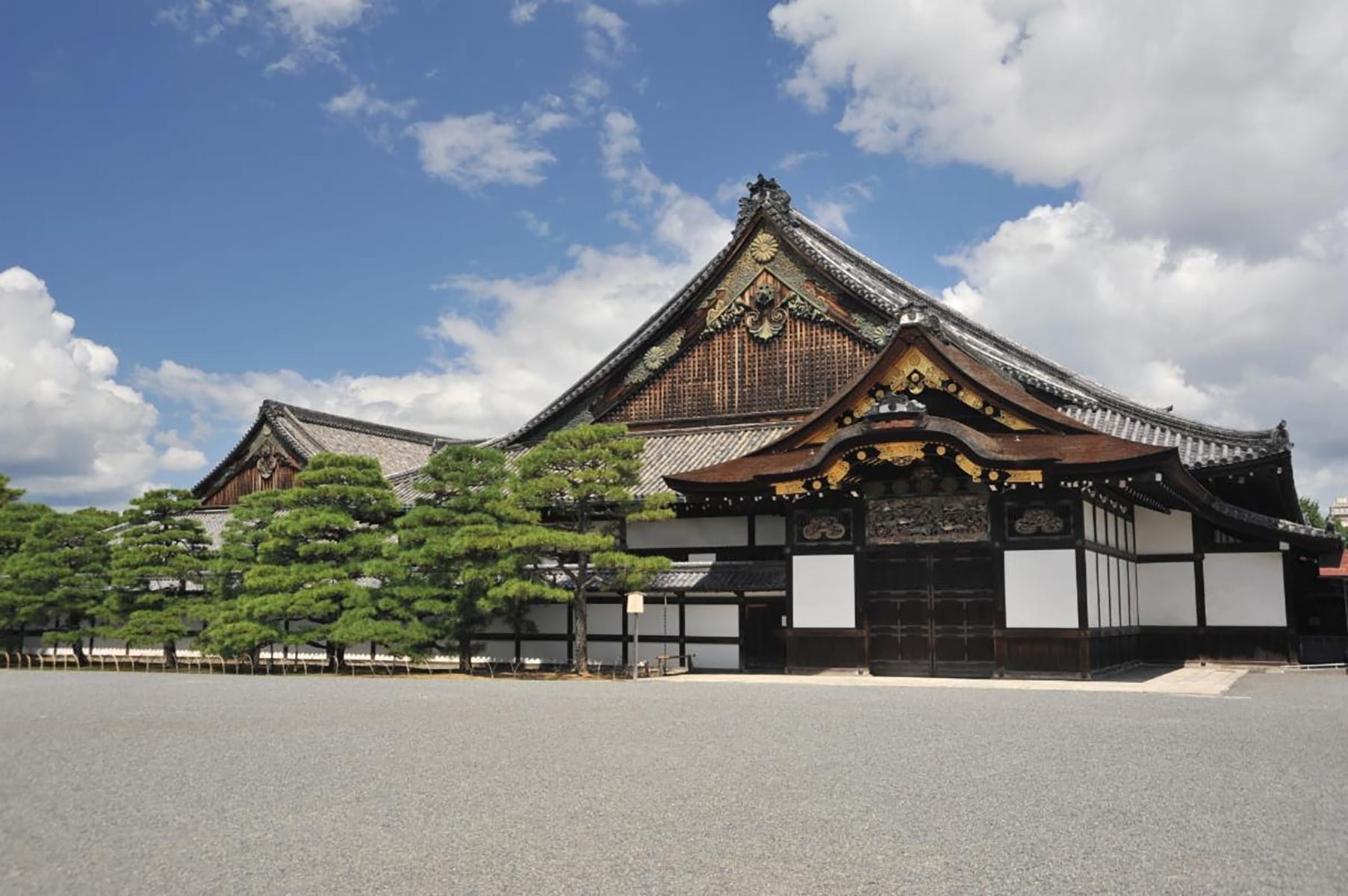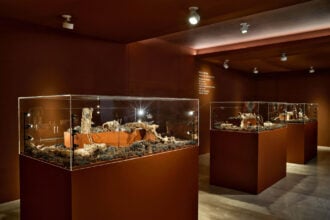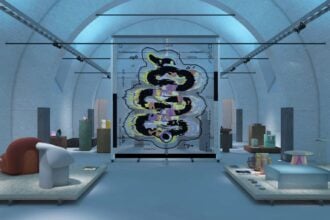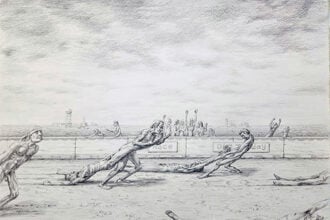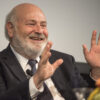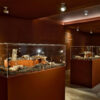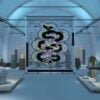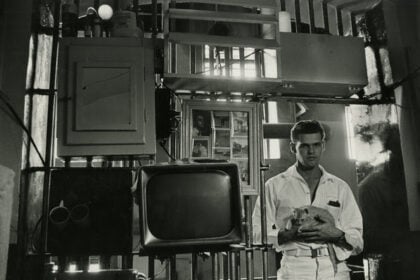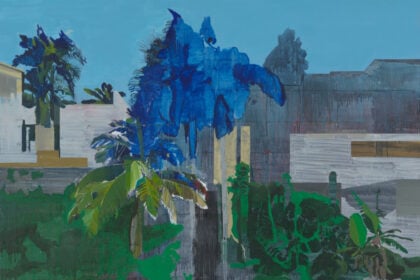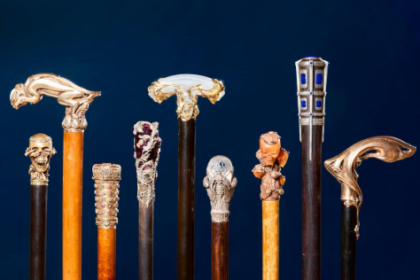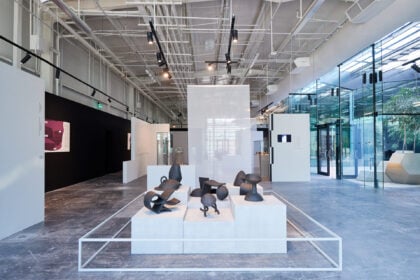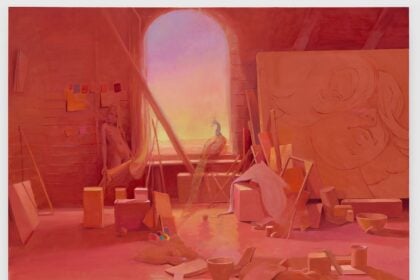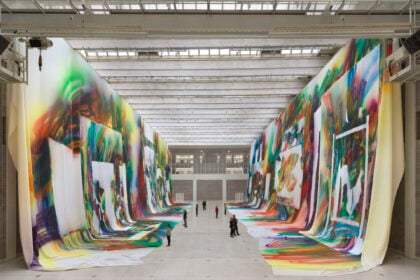It is with great pleasure that Kyoto City and Fergus McCaffrey announce a major exhibition of new paintings and sculpture by Anselm Kiefer at Nijo Castle, Kyoto in Spring 2025. The exhibition will be on view from late March until the end of June, occupying the entirety of the Daidokoro building, adjacent storehouses, and parts of the castle garden. It will be the largest exhibition of Anselm Kiefer’s work ever in Asia and will coincide with Expo Osaka.
Anselm Kiefer comments:
“And surely you have seen, in the darkness of the innermost rooms of these huge buildings, to which sunlight never penetrates, how the gold leaf of a sliding door or screen will pick up a distant glimmer from the garden, then suddenly send an ethereal glow, a faint golden light cast into the enveloping darkness, like the glow upon the horizon at sunset.”
Jun’ichirō Tanizaki, In Praise of Shadows, 1933

“About ten years ago the advent of vibrant new oil paints and a ready supply of gold leaf ushered in a new way for me to paint. Gold proved to be a radiant support that brought an inner light into my paintings. As the opportunity to exhibit at the Doge’s Palace in Venice came to fruition in 2022, my interest in Japan was rekindled by Fergus McCaffrey. Soon I became emersed in the splendid patinated gold of Kano School screens and the resonance of Tanizaki’s memorable recollections about old Japanese interiors.
The utilitarian use of gold as a source of reflected illumination at Nijo Castle is a revelation to me. The confluence of aesthetics and political power on this site and the historical cycle of creation, destruction, and rebirth echoes my own consciousness. I greatly look forward to exhibiting at Nijo Castle during Cherry Blossom season in 2025”.
The Mayor of Kyoto City, Daisaku Kadokawa writes:
“The history of Nijo Castle bookends the Edo Period (1603-1868) and the rise and fall of Tokugawa Shogunate. Tokugawa Ieyasu demonstrated his ascendence to national power by commissioning the finest craftsmen to build Nijo Castle in 1602, and the Kano School began the decoration of the Ninomaru Palace in 1626 under Tokugawa Iemitsu.

Two hundred and fifty years later, as the Edo Period waned and Japan re-opened itself to the world in the 1850s; Japanese arts and crafts made their way to Europe. The emergent styles of Japonisme and Jungendstil reflected Western artists and craftsmen’s encounter with the Gesamtkunstwerk of Edo Period art, craft, and architecture.
Anselm Kiefer is an artist of world renown, whose immersive painting and sculpture installations trace humanity’s history, philosophy, and culture across space and time. It is a great honor for Kyoto to host this unique exhibition at Nijo Castle in 2025.”
Fergus McCaffrey reflects:
“Amongst the thousands of paintings, sculptures, photographs, and watercolors dispersed in hundreds of thousands of square feet of studio space at Atelier Anselm Kiefer in June 2022, I was astonished to encounter an austere gold-ground painting of Ergot infected wheat sheaves.

The perspectival flatness of Anselm’s painting and the graphic boldness of black ink on gold transported me back in time to my graduate studies at Kyoto University in the early 1990s, when I first visited Nijo Castle.
Instantaneously, the potential for an open dialogue between Kiefer and Kyoto became apparent.
I would like to thank Anselm Kiefer and Mayor Kadokawa for their
commitment to realizing this extraordinary project in 2025.”
About the Artist:
Anselm Kiefer was born in 1945, in Donaueschingen, Germany, and raised by the Rhine River in the Black Forest region. After studying law and romance languages, he atended the School of Fine Arts at Freiburg im Breisgau and the Art Academy in Karlsruhe. In the early 1970s he studied informally with the artist Joseph Beuys in Düsseldorf.
In 1993 the exhibition Anselm Kiefer: Melancholia was arranged by the Sezon Museum of Art, Tokyo; National Museum of Modern Art, Kyoto; and Hiroshima City Museum of Contemporary Art. Kiefer was the recipient of the Japan Art Associations Praemium Imperiale for Painting in 1999.

Outside of Japan, Kiefer’s work has been celebrated by solo exhibitions at world’s most pres�gious museums including Kunsthalle Bern, Switzerland (1978); Museum Folkwang, Germany (1981); Whitechapel Gallery, London, UK (1982); Kunsthalle Düsseldorf, Germany (1984); Musée d’Art Moderne de la Ville de Paris, France (1984); Israel Museum, Jerusalem, Israel (1984); Stedelijk Museum Amsterdam, Netherlands (1986); Art Institute of Chicago, IL (1987-8); Philadelphia Museum of Art, Philadelphia, PA (1988); Museum of Contemporary Art (MOCA), Los Angeles, CA (1988); Museum of Modern Art (MoMA), New York, NY (1988-9); Neue Nationalgalerie, Berlin, Germany (1991); Sezon Museum of Art, Tokyo, Japan (1993); National Museum of Modern Art, Kyoto, Japan (1993); Hiroshima City Museum of Contemporary Art, Japan (1993); Museo Correr, Venice, Italy (1997); Museum de Arte Moderna de São Paulo, Brazil (1998); Kawamura Memorial DIC Museum of Art, Sakura City, Japan (1998); Museo Nacional Centro de Arte Reina Sofía, Palacio de Velázquez, Madrid, Spain (1998); Anselm Kiefer exhibition at Palazzo Ducale. Photo credit Georges Poncet, copyright Anselm Kiefer.

Metropolitan Museum of Art, New York, NY (1998, 2009, 2017); Galleria d’Arte Moderna, Bologna, Italy (1999); Guggenheim Biloa, Spain (2000, 2007); Louisiana Museum of Modern Art, Humlebæk, Denmark (2001); Foundation Beyeler, Riehen, Switzerland (2001); Museo Archeologico Nazionale di Napoli, Italy (2004); Modern Art Museum of Fort Worth, TX (2005); Musée d’art contemporain de Montréal, Canada (2005); Hirshhorn Museum and Sculpture Garden, Washington, DC (2005); San Francisco Museum of Modern Art (SFMOMA), CA (2005); Monumenta, Grand Palais, Paris, France (2007); Musée du Louvre, Paris, France (2007); Art Gallery of Ontario, Toronto, Canada (2010); Rijksmuseum Amsterdam, Netherlands (2011); Museum de Bellas Artes de Bilbao, Spain (2011); Tel Aviv Museum of Art, Israel (2011); Albright-Knox Art Gallery, Buffalo, NY (2013); Royal Academy of Arts, London, UK (2014); Nationale de France François-Miterrand, Paris, France (2015); Centre Pompidou, Paris, France (2015); Albertina, Vienna, Austria (2016); Musée Rodin, Paris, France (2017); Pinakothek der Moderne, Munich, Germany (2017); Barnes Foundation, Philadelphia, PA (2017); Astrup Fearnley Museet, Oslo, Norway (2019); Museum Voorlinden, Wassenaar, Netherlands (2019, 2023); Panthéon, Paris, France (2020); Grand Palais Éphémère, Paris, France (2021); Doge’s Palace, Venice Italy (2022); Palazzo Strozzi, Florence, Italy (2024).
About Nijo Castle:
Nijo Castle is amongst the most visited cultural atractions in all of Japan, receiving over one million visitors each year. In 1952 the Ninomaru Palace was designated as a National Treasure, with the Castle and grounds being listed as an Important Cultural Property. In 1994 Nijo Castle was listed as a UNESCO World Heritage Site for the first time.

